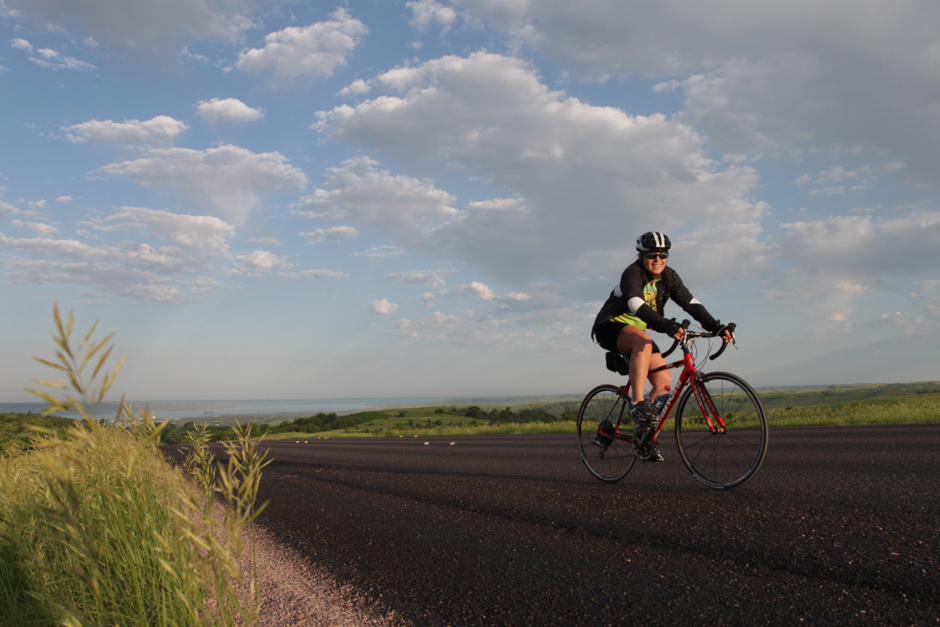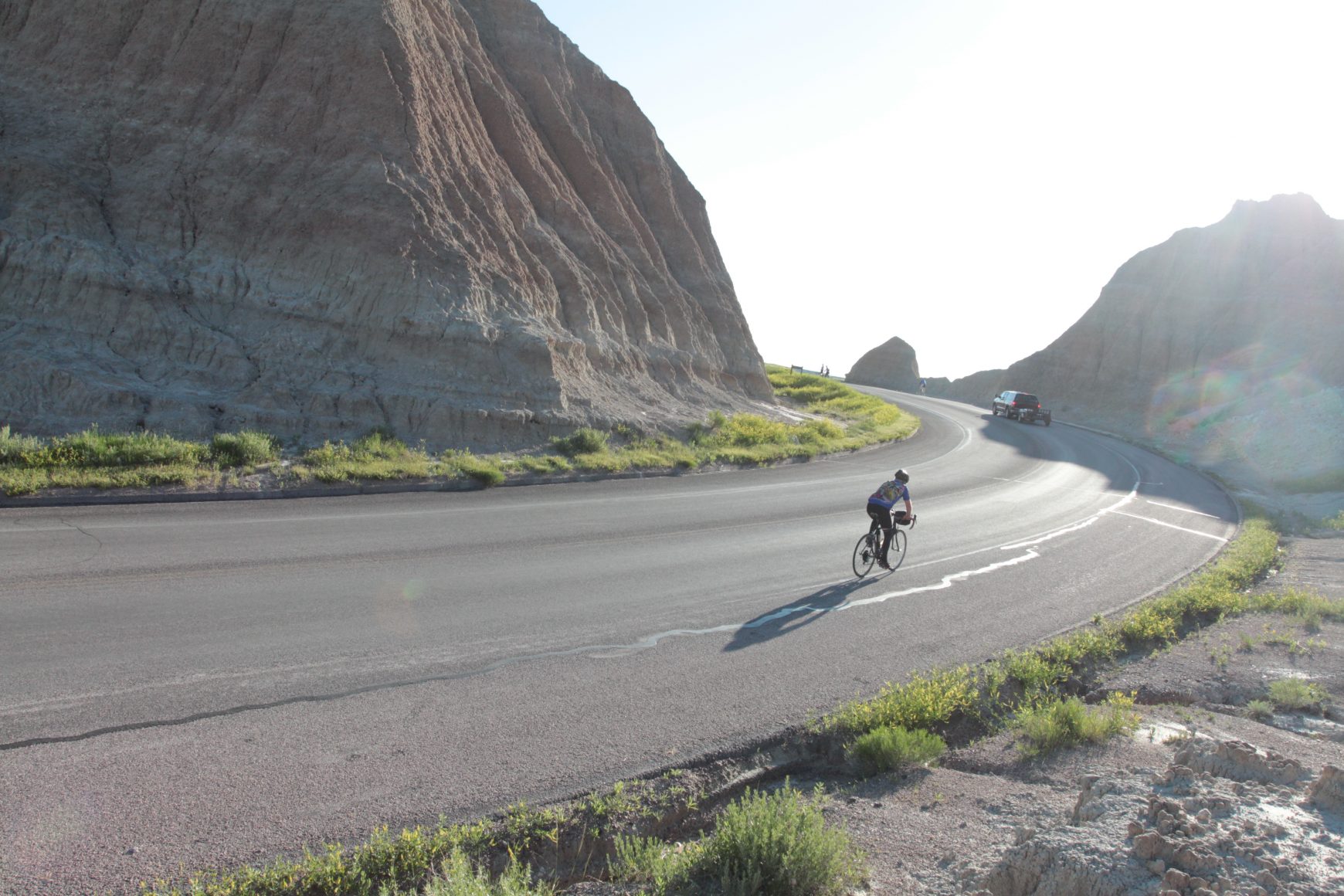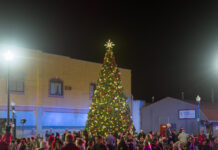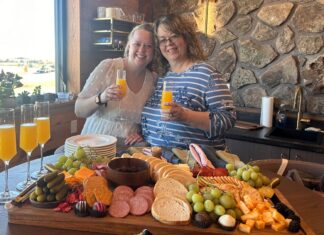“Are you guys lost?” is a question Kasey Abbott and Bob Thimjon say they get a lot. “Is someone making you do this?” is one that often follows.
605 sat down at Ode to Food and Drinks in Sioux Falls with the two Ride Across South Dakota (RASDak) organizers, overlooking the spot along the Big Sioux River that their seven-day, 517-mile bike tour will meet its finish line. The ride takes place June 4-10, launches in Rapid City, and runs through spots like the Badlands, Wall, Presho, and Wessington Springs.

The route has shifted each year, but organizers are offering a locational throwback to the tour’s inaugural run. “Sioux Falls is really a beautiful city, and we’ve done so much with our riverfront, we thought, we need to show this off,” said Abbott. “A lot has changed in five years.”
A lot has changed for RASDak, too. Five years ago, Abbott and Thimjon say the entire tour was planned in two months, after the popular Tour Dakota bike ride set up their kickstands. Now, it’s a year-round process, and the ride has grown from 85 participants to nearly 200.
Cyclists can ride the entire week, but also have an option of individual days with the group. It’s a big effort for the 15 volunteers Abbott says make up their team. In addition to finding hospitality options along the way, volunteers mark routes, provide safety trailers and warnings to drivers, transport cyclists’ luggage to each campsite, and coordinate rest room facilities. SAG volunteers look out for weary riders and help transport bikes in severe weather. While comparable bike tours can cost thousands of dollars, registration fees this year cost only $175.

Days can be long. The group covers about 75-100 miles a day, with rest stops about every 15 miles. Days begin around 5:30 a.m., and all cyclists have to be at the day’s final host destination by 5 p.m. You don’t have to be experienced, Abbott and Thimjon assured, but preparation pays off.
“There are some people that do not prepare that much, but we recommend that you spend a lot of time in the ‘saddle,’” explained Abbott, “because you’ve gotta be in cardio shape, and you also have to have your butt toughened up enough that you don’t get sore.”
Thimjon agreed, “If you get sore early in the week, it’s not going to get any better during the rest of the week.”
Perhaps the biggest issue, they say, is making sure participants don’t overdo it.

“We’ll have trouble in that people will want to finish the ride and won’t quit, and we just have to be careful that people don’t push themselves too far,” said Abbott. “Our SAG team does a good job of making sure nobody gets into trouble.”
Stops along the way often come with local specialties and are what make this tour unique. Cyclists come across spots known for their pies, kuchen pastries, donuts, or homemade soups. In others, farm families have served up massive dinners to the pack of hungry riders in parts of the state many locals haven’t stumbled upon.
“Somehow, I think everybody gains some weight during the week,” said Abbott.
And the tour gives back – doubling some towns’ populations with hundreds of riders and stimulating local business. Funds collected through RASDak also allow the group to boost communities through scholarships. Five hundred dollar awards go to students in five towns this year, whose projects have helped improve their communities. A $500 scholarship is also awarded to the town that bicyclists vote as their favorite overnight stay.
“We’ve earned a ton of good will by stopping in these small towns… and it shows that bike tourism is viable in South Dakota, and there’s a lot of opportunities,” recalled Abbott.
The tour isn’t just encouraging locals to learn more about the area, but attracting national attention. Cyclists are traveling from 25 states and Canada this June to experience the state’s landscape more intimately than from the confines of a speeding SUV.

“That’s the fun thing – showing people from all over the country,” said Abbott. “Everybody knows about the Badlands and the Black Hills, but [it’s about] showing them all these other cool little places. As far as variety goes, I can’t think of a state that has more variety with the scenery and the culture.”
“It’s a fun week with great people and great scenery,” agreed Thimjon.
Mile by mile, RASDak is proving that bike tourism is a growing industry in South Dakota. And that, Abbott says, pays off.
“It’s a lot of us who say this – it’s the best week of the year for us.”
For more information and a full map of RASDak’s tour, visit rasdak.com.
517 MILE BIKE TOUR
- Rasdakians sport new themed jerseys each year for the ride.
- It’s recommended that cyclists wear a special mirror attached to a helmet or sunglasses in order to view traffic behind them.
- RASDak cyclists are encouraged to get most of their miles in during the morning hours to avoid severe weather and tough head winds – more common during the afternoons.
- If 517 miles aren’t enough, cyclists have the option of adding extra miles through alternative route options at some points in the trip.




















